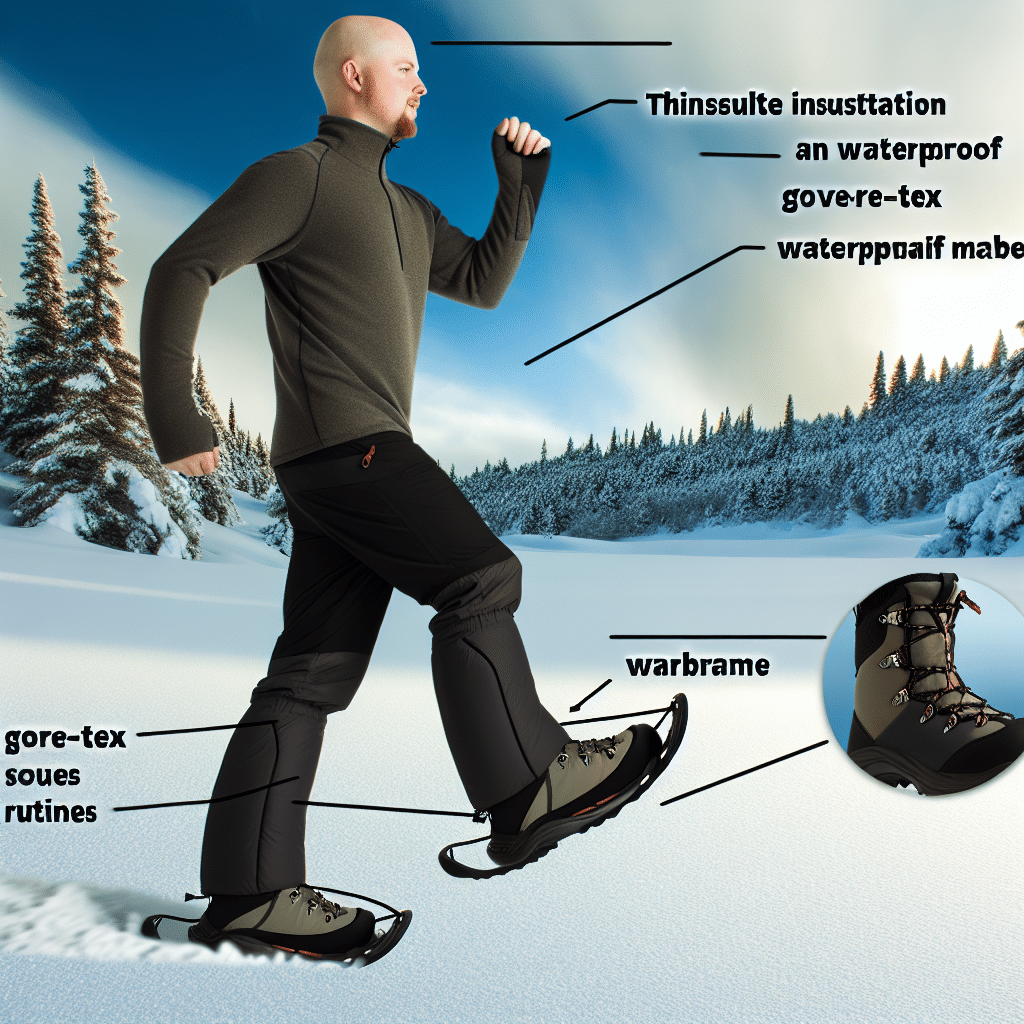When you think of snowshoeing, the image that probably comes to mind is one of pristine, snow-covered landscapes, the crisp air filling your lungs, and the crunch of snow beneath your feet. But to truly enjoy this winter wonderland activity, your feet need to be properly equipped. The big question is: **what kind of boots to wear snowshoeing** to ensure comfort, warmth, and stability? Let’s get into the details!
Why Are the Right Boots Essential for Snowshoeing?
Snowshoeing is an exhilarating way to explore the snowy outdoors, but your enjoyment can quickly turn to misery if your feet are cold, wet, or uncomfortable. The right pair of boots serves several critical functions. Here’s why it’s crucial to choose wisely:
Warmth
Your feet are among the first parts of your body to feel the cold. Sub-zero temperatures and prolonged exposure can make things worse. Boots that offer good insulation will keep your feet toasty and prevent frostbite.
Waterproofing
Snow is essentially water, and as you trudge through it, your boots are constantly exposed to moisture. Waterproof boots ensure your feet stay dry, which is essential not only for comfort but also for maintaining your body heat.
Traction and Stability
Snowshoeing terrains can be unpredictable. From icy patches to deep powder, you need boots that offer excellent grip and stability, helping you navigate safely.
Support
Walking in snowshoes can put a strain on your feet and ankles. Boots with good arch support and ankle stiffness help distribute the strain more evenly, reducing the risk of injury.
Types of Boots Suitable for Snowshoeing
So, what kind of boots to wear snowshoeing? There are several types that come highly recommended, each with its own advantages and potential drawbacks.
Winter Hiking Boots
**Pros**: These are generally insulated and waterproof, making them a good all-around option. They also provide good ankle support, which is essential for snowshoeing.
**Cons**: They can be a bit bulky and heavy, which might not be ideal for everyone.
Mountaineering Boots
**Pros**: These boots are designed for extreme conditions and provide excellent insulation, waterproofing, and support. If you plan to snowshoe in mountainous or very cold areas, these might be the way to go.
**Cons**: They can be very stiff and might require breaking in. They are also usually more expensive.
Pac Boots
**Pros**: These boots are extremely warm and often come with removable liners, making them easy to dry. Pac boots are excellent for use in very cold conditions.
**Cons**: They can be bulky and might not offer the best ankle support for snowshoeing.
Crampon-Compatible Boots
**Pros**: If your snowshoeing adventures take you to icy terrains, crampon-compatible boots are a great choice. These offer excellent grip and stability, making them perfect for extreme conditions.
**Cons**: They are usually heavier and stiffer, which may not be necessary for all snowshoeing conditions.
Features to Look For in Snowshoeing Boots
When selecting the perfect pair of boots for snowshoeing, there are various features to keep in mind to ensure they meet all your needs.
Insulation
Opt for boots with good insulation, such as Thinsulate or Gore-Tex. These materials are designed to keep your feet warm while allowing some degree of breathability.
Waterproofing
Waterproof membranes or coatings are a must. Look for boots with sealed seams to ensure no moisture gets inside.
Durability
Snowshoeing can be tough on footwear. Choose boots made from durable materials like full-grain leather or high-quality synthetics that can withstand the rigors of the activity.
Comfort and Fit
Your boots should be comfortable right out of the box, with enough room to accommodate thicker winter socks. Pay special attention to the boot’s fit around the ankle and heel, as these areas require good support.
Sole and Traction
A sole with a good grip is essential for navigating slippery or uneven terrains. Look for boots with aggressive tread patterns designed for winter conditions.
Tips for Trying On and Testing Boots
Once you’ve narrowed down what kind of boots to wear snowshoeing, it’s essential to try them on and ensure they meet all your comfort and performance needs. Here are some tips:
1. **Bring Your Socks**: Wear the socks you plan to use while snowshoeing when trying on boots. This ensures you get an accurate fit.
2. **Walk Around**: Spend a few minutes walking around the store to get a feel for the boots. Pay attention to any pressure points or areas of discomfort.
3. **Test for Flexibility**: Ensure the boot provides enough flexibility in the sole while still offering the necessary support.
4. **Check for Heel Lift**: A little heel lift is normal, but excessive movement can lead to blisters.
5. **Simulate Conditions**: If possible, try to test the boots in conditions similar to what you’ll experience while snowshoeing. Some outdoor stores have small “testing areas” with different terrains.
Conclusion: Make the Right Choice for a Great Snowshoeing Experience!
Snowshoeing can be a delightful and rewarding winter activity, but only if your feet are well-protected and comfortable. So, **what kind of boots to wear snowshoeing**? The best boots for snowshoeing will offer warmth, waterproofing, traction, and support, ensuring you can enjoy the great outdoors without any discomfort or risk of injury. Whether you opt for winter hiking boots, mountaineering boots, pac boots, or even crampon-compatible boots, make sure to prioritize the features that matter most for your needs.
Happy snowshoeing!



